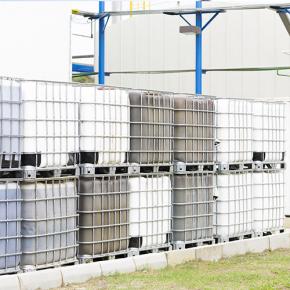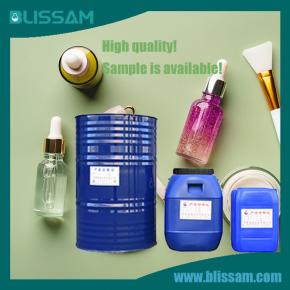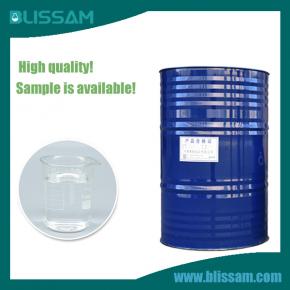Silicone rubber is a versatile and widely used material in various industries due to its unique properties and numerous applications. As a leading chemical manufacturer, BLISSAM specializes in producing high-quality silicone products, including silicone fluids, silicone emulsions, defoamers, silicone resins, and water repellents. This comprehensive guide explores what silicone rubber is, its properties, production process, applications, and why it is a preferred material in many fields.
Silicone rubber is an elastomer (a rubber-like material) composed of silicone, which itself is a polymer containing silicon along with carbon, hydrogen, and oxygen. It is known for its stability and resistance to extreme temperatures, making it suitable for various applications. Silicone rubber is available in various forms, including solid rubber, liquid silicone rubber (LSR), and room-temperature vulcanizing (RTV) silicone.

The unique properties of silicone rubber arise from its chemical structure:
Siloxane Backbone: The backbone of silicone rubber consists of repeating units of siloxane (Si-O-Si) bonds, which provide flexibility and stability.
Cross-Linking: Silicone rubber can be cross-linked, enhancing its elasticity and mechanical strength.
Key properties of silicone rubber include:
Temperature Resistance: Can withstand temperatures ranging from -60°C to 250°C (-76°F to 482°F).
Chemical Resistance: Resistant to many chemicals, including oils, solvents, and acids.
Electrical Insulation: Excellent electrical insulating properties.
Durability: Resistant to UV radiation, ozone, and weathering.
Flexibility: Maintains flexibility over a wide temperature range.
Biocompatibility: Non-toxic and suitable for medical applications.
The production of silicone rubber begins with the raw materials, primarily silicon, which is derived from silica (sand). The silicon is then reacted with methyl chloride in the presence of a catalyst to produce methyl chlorosilane, which is further processed to produce silicone.
The next step involves compounding, where the silicone base polymer is mixed with various additives to enhance its properties. These additives can include fillers, pigments, stabilizers, and cross-linking agents. The compounding process determines the final properties of the silicone rubber, such as hardness, color, and mechanical strength.
Vulcanization is the process of cross-linking the silicone polymer chains to form a three-dimensional network, which gives the material its elastic properties. There are different methods of vulcanization, including:
Peroxide Curing: Uses organic peroxides to initiate the cross-linking reaction.
Platinum-Catalyzed Curing: Utilizes a platinum catalyst for addition curing, resulting in a fast and efficient process.
Condensation Curing: Involves the reaction of silanol groups with a cross-linking agent, typically used for RTV silicone.
Once the silicone rubber is compounded and vulcanized, it can be molded and shaped into the desired form using various techniques, such as:
Injection Molding: Suitable for high-volume production of complex parts.
Compression Molding: Used for producing larger, simpler shapes.
Extrusion: Ideal for creating continuous profiles, such as tubing and seals.

Silicone rubber is extensively used in the automotive industry for its temperature resistance and durability. Common applications include:
Seals and Gaskets: Provide airtight and watertight seals in engines and other components.
Hoses and Tubing: Used for coolant and fuel hoses due to their chemical resistance.
Electrical Insulation: Protects electrical connections and components from heat and moisture.
The biocompatibility and flexibility of silicone rubber make it suitable for medical and healthcare applications:
Medical Devices: Used in catheters, implants, and tubing.
Prosthetics: Provides a comfortable and flexible material for prosthetic limbs.
Silicone Gels and Adhesives: Used in wound care and scar treatment products.
Silicone rubber's electrical insulating properties and resistance to environmental factors are ideal for electronics:
Keypads and Seals: Used in electronic devices for flexible and durable keypads.
Cables and Connectors: Provides insulation and protection for electrical cables and connectors.
Encapsulation: Protects sensitive electronic components from moisture and contaminants.
Silicone rubber is also found in various consumer products due to its safety and versatility:
Kitchenware: Used in baking mats, spatulas, and molds due to its heat resistance and non-stick properties.
Personal Care Products: Found in products like baby bottle nipples and toothbrushes.
Toys: Safe and durable material for children's toys.
Silicone rubber is used in numerous industrial applications for its durability and chemical resistance:
Seals and Gaskets: Used in industrial machinery and equipment.
Vibration Dampening: Provides vibration isolation in industrial equipment.
Adhesives and Sealants: Used for bonding and sealing applications in construction and manufacturing.

Silicone rubber can operate in temperatures ranging from -60°C to 250°C (-76°F to 482°F), making it suitable for extreme environments.
The hardness of silicone rubber can be adjusted from 10 to 80 Shore A, depending on the application requirements.
Silicone rubber has a tensile strength ranging from 4 to 12 MPa, providing excellent mechanical properties for various applications.
The elongation at break for silicone rubber typically ranges from 200% to 700%, indicating its flexibility and stretchability.

Silicone rubber is a highly versatile and durable material with numerous applications across various industries. Its unique properties, such as temperature resistance, chemical resistance, and flexibility, make it an ideal choice for automotive, medical, electronics, consumer, and industrial applications. BLISSAM provides high-quality silicone products to meet the diverse needs of its customers. Understanding the properties, production process, and applications of silicone rubber can help manufacturers and consumers make informed decisions about its use in their products and projects.
Contact:
Phone: +86-15957191858
E-mail: info@blissam.com
Whatsapp:+8615957191858
Add: A647, No. 9, Xiyuan Road, Xihu District, Hangzhou, Zhejiang, China
We chat
